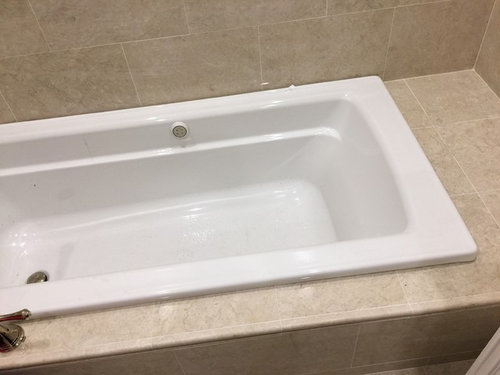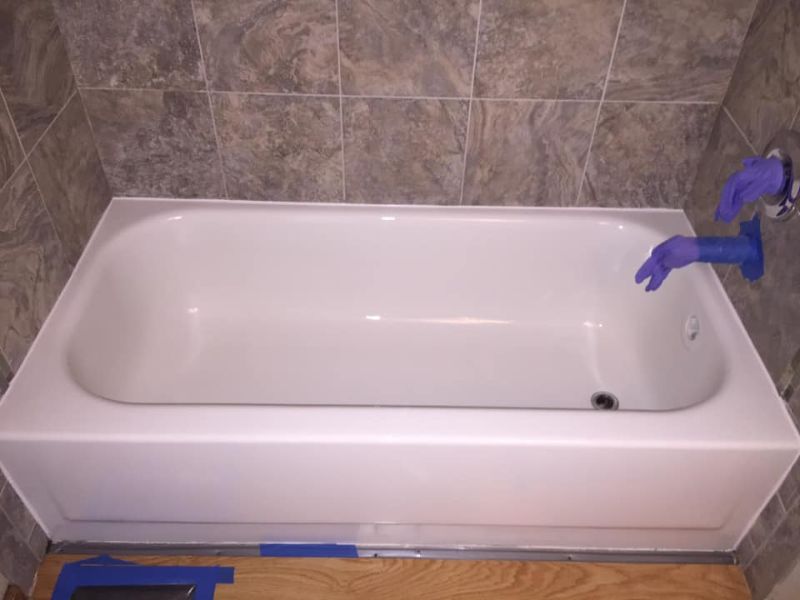Plumbing Essentials: An Essential for Installing a Bathtub
Plumbing Essentials: An Essential for Installing a Bathtub
Blog Article
How do you really feel when it comes to How to Install a Bathtub?

Setting up a bathtub isn't exactly rocket science, however it does require strong plumbing, woodworking, and also in some cases, tiling skills. Replacing an old tub with a new one is additionally a reasonably difficult task. If the old bathtub is conveniently obtainable, the task can move immediately; if you need to open a wall to remove the old tub as well as position the brand-new bath tub, the task is much harder. In either situation, the project is within a house handyman's abilities, although you will need a helper to vacate the old bathtub and set in the brand-new one. Make sure you have actually qualified on your own for the work and fit trying it. Instead of working with a contractor to take over a halfway-completed job, it is far better to consider employing one before you begin. Chances are you might require a professional plumber to make tube connections.
This short article will certainly assist you set up a new bathtub in your bathroom if you have actually currently purchased a brand-new bathtub and also don't require to change the plan of your previous water system pipelines.
Your tools as well as product checklist should consist of the following:
Removing Old Touches
If you need to replace old faucets with brand-new ones as a part of your installation, then the first thing you ought to do is disconnect the water supply. After doing so, activate the faucets to drain any kind of water continuing to be in the system. The process of eliminating the existing taps can be fairly problematic due to the limited gain access to that is typically the situation.
Utilize a container wrench (crowsfoot spanner) or a faucet tool to reverse the nut that links the supply pipes to the taps. Have a cloth prepared for the staying water that will certainly originate from the pipes. Once the supply pipes have actually been eliminated, make use of the same device to loosen up the nut that holds the taps onto the bath/basin. You will need to quit the solitary taps from turning throughout this process. Once the taps have been gotten rid of, the holes in the bath/basin will certainly have to be cleaned of any type of old sealing compound.
Prior to carrying on to fit the brand-new faucets, contrast the pipe connections on the old taps to the new faucets. If the old faucets are longer than the brand-new faucets, then a shank adapter is needed for the brand-new taps to fit.
Fitting New Touches
If the tails of the brand-new faucets are plastic, then you will require a plastic port to stop damage to the string. One end of the connector fits on the plastic tail of the tap and also the other end offers a link to the existing supply pipes.
If you need to fit a monobloc, after that you will certainly need reducing couplers, which attaches the 10mm pipe of the monobloc to the standard 15mm supply pipeline.
Next, position the faucet in the mounting hole in the bath/basin making certain that the washers remain in area in between the faucet and the sink. Secure the faucet in place with the maker offered backnut. Once the faucet is safely in place, the supply pipelines can be connected to the tails of the faucets. The taps can either be attached by using corrugated copper piping or with normal faucet connectors. The previous type ought to be connected to the faucet ends first, tightening up just by hand. The supply pipes can later on be linked to the various other end. Tighten up both ends with a spanner after both ends have actually been attached.
Setting up the Tub
Using both wood boards under its feet, put the tub in the needed position. The wood boards are helpful in equally spreading out the weight of the bath tub over the location of the boards rather than concentrating all the weight onto four small points.
The following objective is to make sure that the tub is leveled all round. This can be accomplished by examining the level as well as changing the feet on the tub up until the level reads degree.
To mount taps, fit the bottom of the furthest flexible faucet connector to the suitable supply pipe by making a compression sign up with; after that do the very same for the other tap.
Switch on the supply of water and also examine all joints as well as brand-new pipework for leakages as well as tighten them if essential. Fill the bathtub and likewise check the overflow outlet as well as the normal electrical outlet for leakages.
Ultimately, fix the bath paneling as explained in the producer's user's manual. Tiling and securing around the tub must wait up until the bath tub has actually been used at least when as this will certainly settle it right into its last placement.
Planning for the Installation
To start with, the supporting structure supplied with the bath must be fitted (if required) according to the manufacturer's directions. Next off, fit the faucets or mixer to the bath tub. When fitting the tap block, it is very important to make certain that if the faucet features a plastic washing machine, it is fitted in between the bath and the taps. On a plastic bathroom, it is additionally practical to fit a sustaining plate under the faucets system to prevent strain on the tub.
Fit the versatile tap ports to the bottom of both faucets making use of 2 nuts as well as olives (sometimes provided with the tub). Fit the plug-hole electrical outlet by smearing mastic filler round the sink electrical outlet hole, and after that pass the outlet with the hole in the bathroom. Make use of the nut supplied by the producer to fit the plug-hole. Analyze the plug-hole outlet for an inlet on the side for the overflow pipe.
Next, fit completion of the versatile overflow pipe to the overflow outlet. Afterwards, screw the pipeline to the overflow face which should be fitted inside the bath. Make certain you use every one of the provided washers.
Link the trap to the bottom of the waste outlet on the bathtub by winding the string of the waste electrical outlet with silicone mastic or PTFE tape, as well as screw on the catch to the outlet. Link all-time low of the overflow tube in a similar manner.The bath need to now be ready to be fitted in its final placement.
Tiling Around the Bath tub
In the area where the bathroom meets the floor tile, it is necessary to seal the accompanies a silicone rubber caulking. This is important as the fitting can relocate sufficient to fracture an inflexible seal, triggering the water to penetrate the wall in between the bathroom as well as the tiling, resulting in difficulties with dampness and possible leakages to the ceiling listed below.
You can pick from a variety of coloured sealants to assimilate your components and also installations. They are offered in tubes and also cartridges, and are capable of securing spaces approximately a size of 3mm (1/8 inch). If you have a larger space to fill, you can fill it with twists of drenched paper or soft rope. Bear in mind to always load the bathtub with water before securing, to allow for the motion experienced when the tub is in usage. The sealant can break relatively very early if you do not consider this motion prior to sealing.
Conversely, ceramic coving or quadrant floor tiles can be utilized to edge the bath or shower tray. Plastic strips of coving, which are easy to use and also reduce to dimension, are also easily readily available on the market. It is suggested to fit the tiles using water-resistant or waterproof glue as well as grout.
Bathtub Installation
How Important Is A Bathtub To Your Home?
High-quality baths, showers, and other bathroom updates are necessary when considering a smart investment in your home. It’s a room that you go to every day and one that is constantly being used by guests.The bathroom is one of the top trafficked rooms in a home and also one of the most valuable in terms of home resale.
Install Piping Before Tub
You will be using your existing drain and waste vent system, but pipes required include the hot and cold water supply lines and a pipe leading to a shower head. A mixing valve and shower head are also needed. Air chambers may be required.
Position the Tub
Lower the tub into place so that the continuous flange fits against the wall studs and rests on 1’x4' or 2’x4' supports. Anchor the tub to the enclosure with nails or screws inserted through the flanges into the studs.
NOTE: Remember, bathtubs and shower stalls may require support framing. A bathtub filled with water is extremely heavy, so check building codes and framing support before installing the tub.
Assemble Drain Connections
Assemble the bathtub drain connections by connecting the tub overflow with the tub drain above the trap, not beyond it. The trap will have a compression fitting that screws over the arm of the overflow assembly.
Place a Pipe For the Shower Head
First, locate a brass female threaded winged fitting and attach it to a framing support via a screw or a nail. Then run a pipe up the wall for the shower head. Sweat or solder the other side of the brass fitting to the top of the pipe.
Attaching Hot and Cold Water Lines
Attach your water lines for both hot and cold by sweating these directly into the hot and cold ports of the mixing valve. The mixing valve will be how water enters the tub’s system, not by the pipes themselves.
Install the Spout
Extend a piece of 1/2 inch pipe, or whichever length is specified in the manufacturer’s instructions, for the tub spout. Sweat on a male threaded fitting at the end of the pipe or use a brass nipple of the proper length and a 1/2 inch cap.
NOTE: At this point you should have your rough-in plumbing work inspected before proceeding further.
Check For Leaks
Restore the water pressure and check the drain connection and the supply pipes for any sign of leaking.
estore the Bathroom Wall
Replace the wall with moisture-resistant drywall as a base for your wall covering. Seal the joints between the wall and your new tub with silicone caulk as protection against water seepage.
https://www.berkeys.com/2016/12/02/bathtub-installation-dallas/

Do you appreciate more info about Tools You Need to Install a New Bathtub ? Try to leave a comment below. We would be delighted to know your suggestions about this entry. In hopes to see you back again soon. If you enjoyed our blog entry please make sure you remember to share it. We appreciate reading our article about How to Install a Bathtub.
Schedule Service Pickup Report this page